© 2025 ALLCITY Network Inc.
All rights reserved.

Grantland’s Jonah Keri wrote, “the Rockies could be this year’s out-of-nowhere squad that rides 99th-percentile luck to a big season.” This fell in line with my spring training prediction of 68 or 88 wins for the 2015 Colorado Rockies. There was an alternate universe where Jon Gray was called up 15 days into the season, Troy Tulowitzki played 140 games in Denver, and Nolan Arenado‘s MVP caliber season was not all for naught. None of this happened, and the Rockies reached the low end of my prediction, and won 68 games. 2015 was one of the worst seasons in Rockies history, yet it was a bridge year for the organization, and an interesting one at that.
Finally the Rockies are now out from underneath the cloud that was the Tulowitzki trade rumors. Beyond that, the front office is run by a new staff for the first time in more than a decade, and the team itself is starting to see their deep farm system knock on the door of 20th and Blake. The once veteran lead team behind Tulo and Jorge De La Rosa is starting to reflect a youth movement lead behind Nolan Arenado. For a team that lost more than 90 games for a second straight season, we learned a lot. We may finally know the definitive direction of this franchise moving forward.
Jeff Bridich’s voice became the clear voice of this franchise this year, after Dan O’Dowd, Bill Geivett left their jobs atop of the Rockies’ brass. That change was a huge step forward considering the front office hadn’t been under clear leadership since Keli McGregor died in 2010.
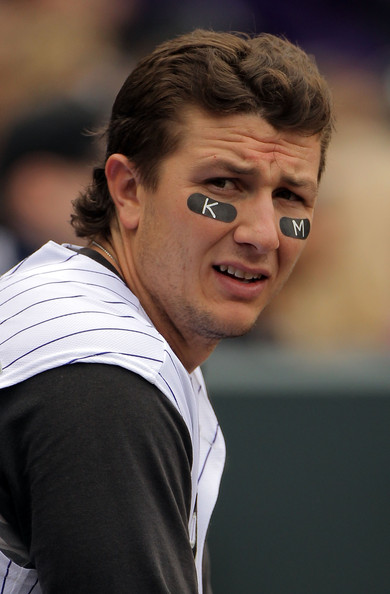
The first big move that was made paid off in spades for Bridich as the Rockies extended a qualifying offer to Michael Cuddyer who rejected and signed with the Mets. With that move, the Mets forfeited their first round pick which landed the Rockies a compensation pick in 2015, they used that pick to draft Mike Nikorak. The next move that was made was to let Brett Anderson leave, and eventually he signed with the Dodgers. The next interesting move was selecting the contract of Tyler Anderson who has missed all of 2015, while letting Daniel Winkler, and Taylor Featherston go in the Rule Five draft. After, the Rockies dealt Juan Nicasio to the Dodgers, Nicasio has been solid as a reliever for the Rockies’ division foe. Next the Rockies dealt Josh Rutledge to Anaheim for hard throwing reliever Jairo Diaz. Soon the Rockies rung in the new year with a treat, buying themselves free agent catcher Nick Hundley, who’d become the starter for the Boys on Blake. In a series of minor league deals the Rockies acquired John Axford, Rafael Betancourt, and Justin Miller. Unbeknownst at the time the Rockies made their final 40 man trade before the Tulo trade, dealing catching prospect Jose Briceno to Atlanta for David Hale. The Rockies finished the winter by signing Kyle Kendrick and Daniel Descalso.
Going into the season most of the moves the Rockies made were seen as depth moves, and as new Padres GM A. J. Preller made splash after splash, Rockies fans already became impatient with Jeff Bridich, who really didn’t do much in the offseason. Signing Hundley so that they could move Wilin Rosario to first base, adding an innings eater in the rotation, while adding protection in the form of depth both in the bullpen and on the bench wasn’t seen as “sexy.” No real issues were addressed from the 2014 team which lost 90 plus games. When the team headed off to Arizona for spring training, it looked like the organization was expecting a winning season based on the offseason moves, however this season turned into more of a feeling out year for the newly run team.
Jeff Bridich "It was never our intention to make sweeping changes. We have to remember the talent on this team." pic.twitter.com/BMLh8zC7pZ
— Jake Shapiro, but festive 🎁 (@Shapalicious) January 24, 2015
If you look at what Bridich has done purely from a depth standpoint, which was his obvious goal for the 2015 season, he has succeeded.
— Jake Shapiro, but festive 🎁 (@Shapalicious) August 9, 2015
Things were different right off the bat in 2015. Followers of the Rockies have grown very accustom to the Rockies holding onto guys for too long, and the team putting players in roles that they constantly failed in for too many consecutive times. This all changed with the Rockies separation from Jhoulys Chacin, who was easily the second most talent homegrown pitcher in franchise history. Chacin coming off of an injury was seen to be not taking his role serious enough and the team cut him. A few weeks after the season began LaTroy Hawkins was struggling as the closer and it didn’t take more than a week for the Rockies to adjust bullpen roles. Already a pattern had developed, the Rockies would finally keep their players accountable and forgo their heavily rooted loyalty approach. Of course this foreshadowed the Tulo trade, but we will get there.
The Rockies started the season with free agent acquisition Kyle Kendrick on the mound, an interesting choice to be the opening day starter since he was dubbed an “innings eater,” but Jorge De La Rosa was on the DL due to a spring training injury. While Tyler Matzek, who was coming off a great 10 start stretch to end the 2014 season would open up the home slate at 20th and Blake. The only real surprise to the opening day roster was Rafael Ynoa instead of Brandon Barnes coming off the bench.

A hot start had the Rockies beginning the season with a 7-2 record. Soon after they went on an 11 game losing streak. That hot start propelled the Rockies to their only month that would be positive in the win column. April unlike every other month saw good baseball from the Rockies. The month included two different road sweeps which was very different from 2014 where the team had only won a handful of road games in the second half. For a quick second the Rockies look like a real good ballclub and they hadn’t even started the season fully healthy. Both Carlos Gonzalez, and Troy Tulowitzki started off the year with nagging injuries. Soon not only bad baseball but weather would derail the club.
The Rockies had stretches throughout the season where they looked good. But for every good stretch, they had one, or even two, bad stretches; as is usually the case with a team fighting for last place.
Nolan Arenado’s unreal catch made during the Rockies April sweep of the Giants might tell the story of the season, or at the very least it highlights the play where Nolan became Nolan. My colleague David Martin has written extensively on how he believes Arenado is the star of the Rockies and the future revolves around him. This year was undoubtedly centered around him. But how does this tell the story of the season? Well very quickly as summer approached at 5280, it became apparent that this season would be more about individual effort, than it would be about a ballclub succeeding. Many players on the Rockies were playing for jobs, not playoff positioning after Memorial Day. New GM Jeff Bridch was bound to make some shrewd and harsh moves to an organization that had failed for five straight years. As harsh as that reality is, we learned of many players capabilities in this year of judgment.
Coming off a year where the big story was a comment made by the owner, many things in the organization had to change, and they have made steps towards change in 2015. Not only by staffing a new front office and letting go of the team’s star, but the organization is now running a new sabrmetric-minded, farm first, draft and development, and fiscally minded model. The Rockies ran some experiments this year, with shifting, lineup optimization, and roster makeup. The findings from those experiments are uncertain, but if anything it will help Bridch gain a more clear picture of the Rockies current roster and possible solutions to the Coors Field conundrum.
One of the new steps taken this year was the Rockies approach with draft and development. The draft was a huge opportunity for the franchise to take a step forwards. They had the third pick overall and four picks in the top 44 selections. The Rockies took four high schoolers starting with almost consensus number one draft prospect, shortstop Brendan Rodgers. Their second pick was awarded as compensation for Cuddyer, they would take Mike Nikorak, who is a hard throwing righty. Nikorak hinted at one of the things Bridch was targeting in every acquisition, hard throwers. Another thing the draft told of Bridch’s plans was the Rockies drafting of eight pitchers in the first ten rounds. Many know young pitchers are a crapshoot, so the team essentially hedged their bet and acquired a lot of young high-end talent hoping some of it would pan out. This is smart because the Rockies will always be able to lure veteran free agent hitters like Michael Cuddyer, Justin Morneau, and Nick Hundley to Coors Field. Whereas the only way they can acquired pitching is from within the organization.
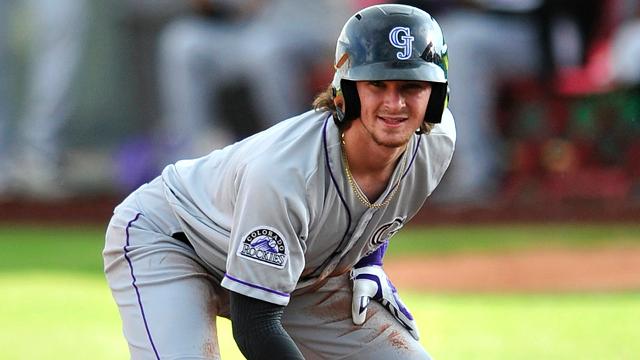
Now we start to get with what went totally wrong for the ballclub.
Adam Ottavino had quickly become one of the better closers in baseball, recording three saves in 10.1 IP, striking out 13, while not allowing a run. This was before his season ended in April because he needed Tommy John Surgery. The next Rockies mainstay to fall was Tyler Matzek. Matzek’s struggles have been well documented, he was sent home as a minor leaguer to work on his mechanics and after his May 6th start he was sent to Albuquerque where he still couldn’t find the strike zone in one start. Matzek was then given a break from baseball before going to extended spring training, then to Boise to make three starts. After Bosie he was sent off, and then he finally finished the season as a reliever in Albuquerque. This was huge disappointment considering the Rockies had finally found a very talented starter who had some success in the majors. About mid-May some bullpen injuries and reshuffling had the Rockies bullpen looking a lot different. Around the same time starting first basemen Justin Morneau went on the DL with a concussion and his career became in jeopardy. Jordan Lyles and later Corey Dickerson hit the DL and the Rockies annual injury bug was back. But it wasn’t just injuries that detoured the Rockies. A disappointing start for Drew Stubbs, a weak season for Kyle Kendrick, and the forcing of Rafael Ynoa into regular playing time. Even small things like Jorge De La Rosa‘s inability to finish the season was upsetting. We’ll get more into individual efforts in our “Ranking the Rockies” series.
As a whole, the ballclub’s biggest downfall was the bullpen. The bullpen pitched the second most innings in the league at 562.2 innings, with a league worst ERA of 4.73. The only reliever to spend the entire year on the 25 man roster was Christian Friedrich, and there weren’t many other bright spots. The bullpen cost the Rockies many games and I would argue that they need to make this a priority to address during a rebuild instead of waiting on other aspects of their team to fall into place. That’s a discussion for another date, but without question the Rockies bullpen was atrocious.
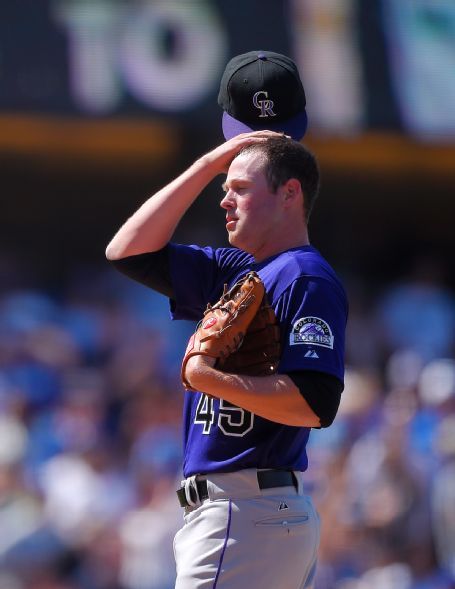
One could blame Manager Walt Weiss for this, and say he deserves to lose his job after three poor seasons. Weiss is without a doubt not the best manager ever but we learned this year that he is competent.
Last year Weiss’ managerial style was clouded by the impact of Bill Geivett’s hands on front office approach. This year Weiss’ true techniques came out, some of those techniques were bad, and some good, but he is not to blame for a bad ballclub. Yes, from the outside it looks as if he has made some very poor in game decisions, as well as done a poor job building the lineup, but the players have begun to respect him. The Rockies’ skipper has finally found his own in his job, sticking up for players and teaching the younger Rockies a winning model of baseball. I for one am not Walt Weiss biggest fan, but to say the Rockies failures fall on his head would be an incorrect statement.
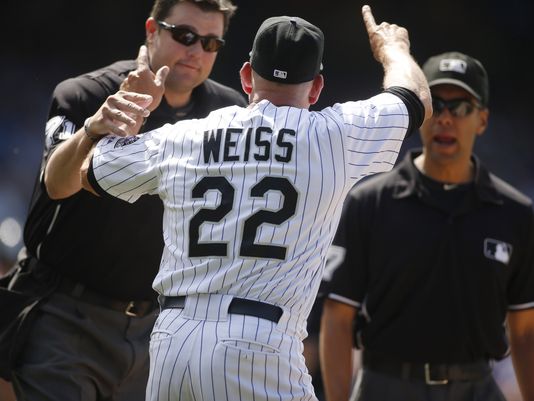
Another area where the Rockies struggled was their bench. Albeit some bench members were forced into the lineup due to injury the Rockies bench took a step backwards in 2015. The biggest bench addition of the offseason was Daniel Descalso; Descalso happened to have the worst WAR on the team in 2015 with a 1.1 fWAR. He was signed to be a super-utility man, and that he was, playing first base, second base, third base, shortstop, and right field. Descalso was a liability at both the plate and in the field for the Rockies. Another liability was Wilin Rosario, the catcher turned first baseman had an awful season. The same can be said with Rafael Ynoa, Kyle Parker, and Drew Stubbs. Three guys coming off the bench did affect the club positively, backup catcher Michael McKenry, backup turned starter Ben Paulsen, and spark plug Brandon Barnes.
The last area where the Colorado Rockies really failed was the starting pitching. This could be said about almost any season in Rockies history, but this one was particularly bad. Not a single starter pitched 150 innings, the last time that happened in baseball was the 2012 Rockies, who due to project 5183 had a reasonable excuse. Excluding that, the Rockies are the first team since the 2006 Tampa Bay Rays to not have a single starting pitcher throw 150 innings.
The aforementioned injuries were a huge detriment to the club, but regulars who stayed healthy produced bad seasons. Eddie Butler, and Kyle Kendrick were both counted on and each failed. Butler failed more spectacularly than Kendrick, yet Kendrick was the source of an on running joke that he’d be a great Home Run Derby pitcher. Butler’s failures had him bouncing back and forth between Denver and Albuquerque, this lead to the admission by Jeff Bridich that the organization had called the highly touted prospect up too early. The Rockies relied heavily on the not good Yohan Flande in the second half, proving for the second season that he was capable of making spot starts but he was not someone to be used often. For the Rockies however he had to be used often.
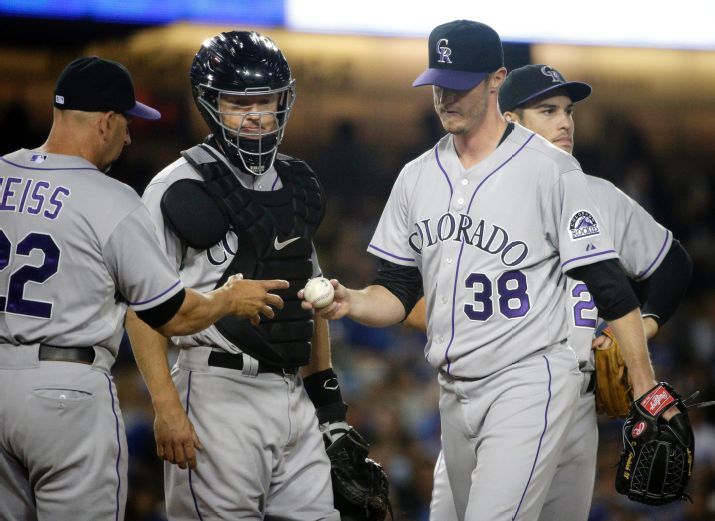
The bright spots for the Rockies came in the form of individual seasons. The best of which came from Nolan Arenado. He wasn’t the only bright spot though, Carlos Gonzalez, Nick Hundley, Charlie Blackmon, DJ LeMahieu, Chad Bettis, and Jorge De La Rosa all put together good campaigns in 2015.
More bright spots came in the form of the farm system, which is now highly rated according to baseball’s experts with as many as eight players rated within some publications top 100 rankings. Highlighting the Rockies crop of farm talent are pitchers Jon Gray, Jeff Hoffman, Kyle Freeland, Antonio Senzatela, Mike Nikorak, Miguel Castro, and Jesus Tinoco, outfielders David Dahl, and Raimel Tapia, and infielders Brendan Rodgers, Ryan McMahon, Forrest Wall, Trevor Story, and Tommy Murphy.
Story and Tapia represented the Rockies at the MLB Futures Game this year. Senzatela was named the California League’s Pitcher of the year. Tapia and McMahon were both Cal League All Stars, while Murphy represented America in the Pan-Am games. We’ll have more on the minor leaguers as the offseason moves along.
The Rockies got three of those prospects (Hoffman, Castro, and Tinoco) in the Troy Tulowitzki trade with the Toronto Blue Jays. The Tulo trade was a franchise defining trade for the Rockies. A heartbreaker for fans, a backbreaker for teammates, and a philosophy-breaker for the organization. The Rockies did what they long promised they would never do and they traded Tulo. For the first time in team history the team traded its star player in his prime in favor for prospects. They recognized that they have failed at developing pitchers and that they really are a mid-market club, that might be out priced when it comes to locking up elite talent long term. The millions the Rockies save in this trade can be directly poured back into developing talent, finding more international talent, or bringing in an established pitcher. This is probably a smarter philosophy for a mid-market club, and might signal a change in how the Rockies will handle their stars moving forward. Some have even suggested the Rockies should take a Billy Beane approach if they want to compete with teams in their own division who spend 100 million more dollars than them.
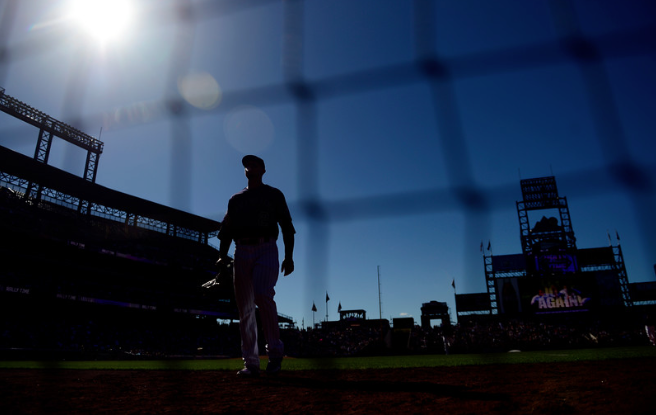
No matter what way you slice it, the Rockies move away from Tulowitzki was shocking. It also gave the organization, for better or worse, clear leadership under Jeff Bridich. Tulowitzki was undoubtedly a perennial MVP threat, on a team-friendly contract, and he was the face of the Colorado sports scene. Tulowitzki’s trade marks the admission that top talent isn’t enough, if it doesn’t equate to winning. This deal could come back to bite the Rockies in more ways than one, whether it’s in form of prospects not panning out, or a lack of trust created between the front office and Nolan Arenado, but for now, Bridich’s shrewd move is seen as a turning point for the franchise.
The direction to that turn remains unclear for the Rockies, but not since “Generation R” have the Rockies had this much young talent. Right now the front office is starting to look like a modern franchise which is something that has never been said before. The Rockies are acting economically minded, and they are treating their players as assets. This will play out very interestingly as the front office starts to look for market inefficiencies, and ways to cheat the system in hopes of getting back to the postseason.
It is refreshing to see a new way of thinking when it comes to running a franchise, and I believe a big offseason of many moves is likely for the Rockies. The bridge year has played out on the field, but it’s not yet finished for the front office. If we have learned anything from this Rockies season we know the team will try to get better for 2017, 2018 and 2019 as much as they will for 2016 this offseason.
As for the 2015 season, it was just another bad season in the Rockies illustrious bad-ness of most of the past 23 years. A failure to get out of last place in the NL west, and a failure to reach 70 wins. 68-94 will not cut it for the 2.5 million fans that showed up at Coors Field this year, and the Rockies are starting to act like that is true. Thier failures this year have seemed to leave a real bad taste in many mouths, and change may be upon the Rockies. Right now looking at the 2015 season however, it goes down as one more poor season where very little was accomplished, but much was learned.
Comments
Share your thoughts
Join the conversation



